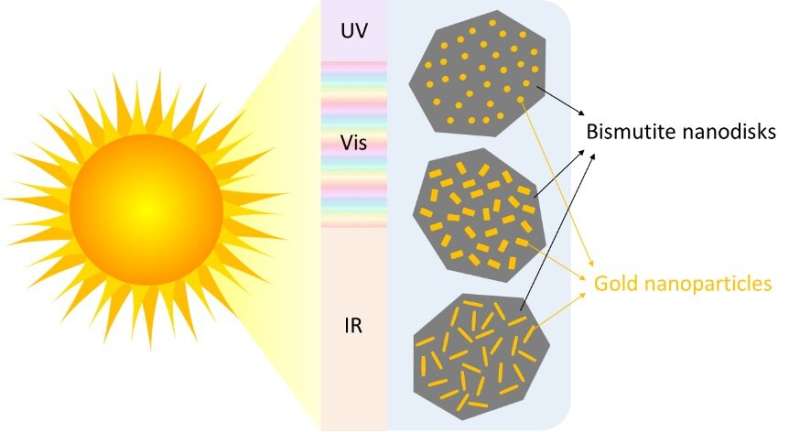Tiny gold particles can help harness energy from the sun to break down pollution
Published on by Water Network Research, Official research team of The Water Network in Academic
Tiny gold particles can help harness energy from the sun to break down pollution
by Kelly Oakes, Norwegian University of Science and Technology

Credit: Norwegian University of Science and Technology
When organic pollutants such as dyes, agricultural chemicals, and pharmaceuticals enter waterways all around the world, they can harm the environment and human health—and removing them can be incredibly difficult.
Photocatalysts—substances that absorb energy from light and use it to accelerate the rate of a chemical reaction—can decompose organic pollutants in a process called mineralization, converting them into water, carbon dioxide, and other harmless molecules. But there's a catch: most photocatalysts require UV light to work, making them impractical and expensive to use at scale.
To solve that problem, researchers have their sights set on finding a photocatalyst that can harness much more of the solar spectrum. "If you can use solar light, it's cheaper and much more available than UV light," says Magnus Rønning, a professor in catalysis at the Department of Chemical Engineering, NTNU.
Gold nanoparticles key
Nano-sized disks made of the mineral bismutite are a promising photocatalyst, and researchers have discovered that adding gold nanoparticles to their surface increases their sensitivity to the visible part of the solar spectrum. However, while there are several ways to deposit those gold nanoparticles on a surface, most methods give limited control over the size and shape of the particles you end up with.
"Often you will get a distribution of sizes and shapes [that] you cannot really control, so you have a mix of rods and spheres and cubes," says Rønning.
Now, Rønning and colleagues at NTNU have found a way to create gold nanoparticles with a uniform size and shape on the surface of the bismutite nanodisks. Their research, recently published in the journal Photochemical and Photobiological Sciences , opens up the possibility of studying the effect of both the size and shape of the nanoparticles on the performance of the catalyst, in turn making it possible to maximize its light-harvesting capacity.
Attached link
https://phys.org/news/2023-06-tiny-gold-particles-harness-energy.htmlTaxonomy
- Purification
- Nano Materials
- Water Purification
- Nanotechnology
- Purification Specialist
- Sustainable water purification